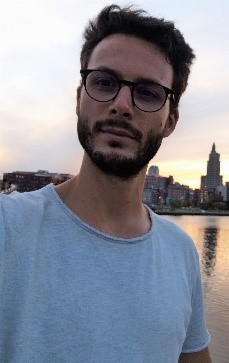You are here :
- EUTOPIA website
- Home
- Research & Innovation
- Fellowship
- SIF - Post-Doctoral Fellowships
SIF 3rd Cohort Fellows - Nicola Peruffo, University of Gothenburg

Curriculum Vitae
- Education
- Experience
January-September 2023: Postdoctoral researcher, University of Gothenburg (Sweden). Research on the preparation and characterization of polaritonic materials
February 2022-January 2023: Postdoctoral researcher, University of Padova (Italy). Research on the ultrafast optical properties of colloidal plexcitonic materials
2018-2022: Supervision of 4 master’s students, one PhD candidate and a postdoctoral fellow during my research period at the University of Padua (Italy)
April 2018-August 2018: Internship at Université Paris-Sud, France. Research topic on Lanthanides Upconverting Nanoparticles, as part of the European Union program “Erasmus Traineeship”
- Publications/Research achievement
- Ten papers published in refereed journals, including seven as the first author. A full list can be found on Orcid, ResearchGate, Google Scholar and Linkedin
- 09/08/10 “Renato Ugo” prize awarded from Accademia dei Lincei, Italy, for the best PhD thesis in the molecular or nanostructured materials field for applications in optoelectronics
- 02/09/2022 “Enrico Cescon” award, for the Best PhD Defence of 2022 of the PhD school “Science and Engineering of Materials and Nanostructures” at the University of Padua, Italy
- Regular participation in international scientific conferences
- 09/08/10 “Renato Ugo” prize awarded from Accademia dei Lincei, Italy, for the best PhD thesis in the molecular or nanostructured materials field for applications in optoelectronics
- 02/09/2022 “Enrico Cescon” award, for the Best PhD Defence of 2022 of the PhD school “Science and Engineering of Materials and Nanostructures” at the University of Padua, Italy
- Regular participation in international scientific conferences
Research Project:
COHESIVE - Determine the Cavity Role in the Strong Exciton-Photon Coupling to Disclose a Cohesive Perspective
The chemical and physical properties of molecules can be tailored not only through their chemical design but also by coupling them strongly to light. This phenomenon called strong exciton-photon coupling (SC), has been studied using different molecules and “cavities”, materials that amplify light and electromagnetic fields. SC materials have, consequently, engineered properties that are appealing for several technological fields such as optoelectronics and quantum technologies.
However, despite their possible vast impact on our society, it is still not clear how the structure of these materials influences the overall properties. Indeed, the literature reports a plethora of different cavity platforms, whose nature influences the SC properties.
This prevents direct comparisons between studies and makes it difficult the knowledge transfer from science towards technology. My research aims to link the features of the cavities with the overall properties of the SC materials. I will use methods coming from chemistry, physics, and optical spectroscopy to prepare SC materials based on different cavities and analyse their optical behaviour.


